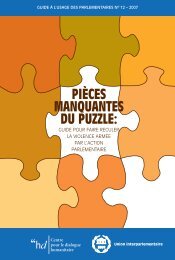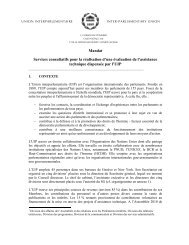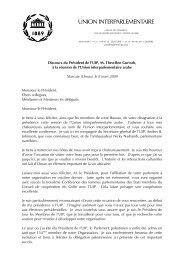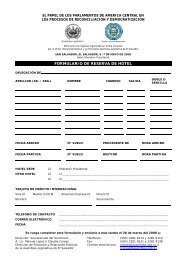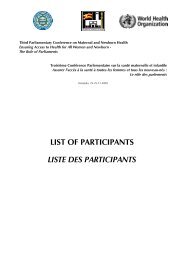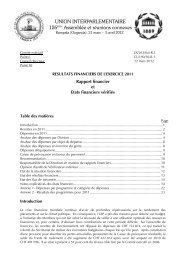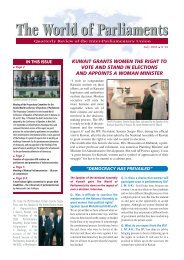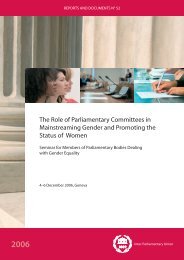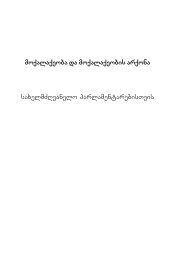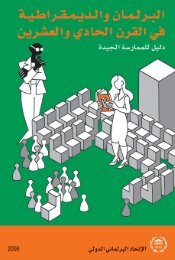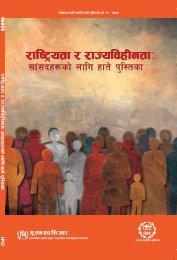MISSING PIECES - Inter-Parliamentary Union
MISSING PIECES - Inter-Parliamentary Union
MISSING PIECES - Inter-Parliamentary Union
Create successful ePaper yourself
Turn your PDF publications into a flip-book with our unique Google optimized e-Paper software.
ANNEX 6<br />
ANNEX 6 FOOD FOR THOUGHT? HUMAN<br />
SECURITY INDICATORS<br />
The need for a robust set of human security indicators for use by governments,<br />
donor agencies, NGOs, regional and international organisations<br />
and others, both to evaluate and fine-tune programming, has long been<br />
noted. The raw material for a typology of indicators has existed for some<br />
time, particularly as the body of quantitative and qualitative information<br />
on gun violence has steadily grown and deepened in recent years.<br />
The HD Centre offers below a model typology of human security indicators<br />
that draws on existing research and expertise as well as input from<br />
many of the contributors to this volume. 1 It is not intended to be definitive<br />
or comprehensive; indicators are flexible and should be adapted and<br />
tailored for use in a variety of specific settings. Moreover, single indicators<br />
rarely measure an effect well. Creating a basket of measures, each with<br />
different limitations, provides greater confidence in the results. If used<br />
routinely and systematically, customised indicators will greatly increase our<br />
understanding of gun violence and its multiple impacts while improving<br />
our understanding of “what works—and what does not”—in combating<br />
these problems.<br />
One particularly important usage of such a typology of indicators would<br />
be to launch an ongoing monitoring effort of global progress in ending<br />
gun violence, inspired by initiatives such as the Landmine Monitor. Such<br />
scrutiny of states’ performance has already been initiated by IANSA and<br />
the NGO collaborative Biting the Bullet, which produced reports for the<br />
UN process on small arms, Implementing the Programme of Action: Action<br />
by States and Civil Society. These reports, referred to as the “Red Book”,<br />
included tables for each region and state on whether or not (Y/N) states<br />
had implemented measures such as developing laws and procedures on<br />
production, export, import and transit, improving stockpile management,<br />
destroying surplus weapons, etc. The authors used responses from surveys<br />
distributed to NGOs as well as archival information. This effort was a<br />
useful first step, but does not provide a systematic assessment of the mag-<br />
175



